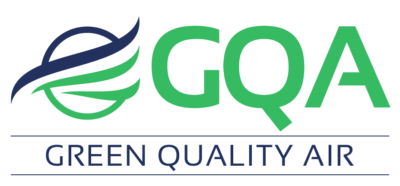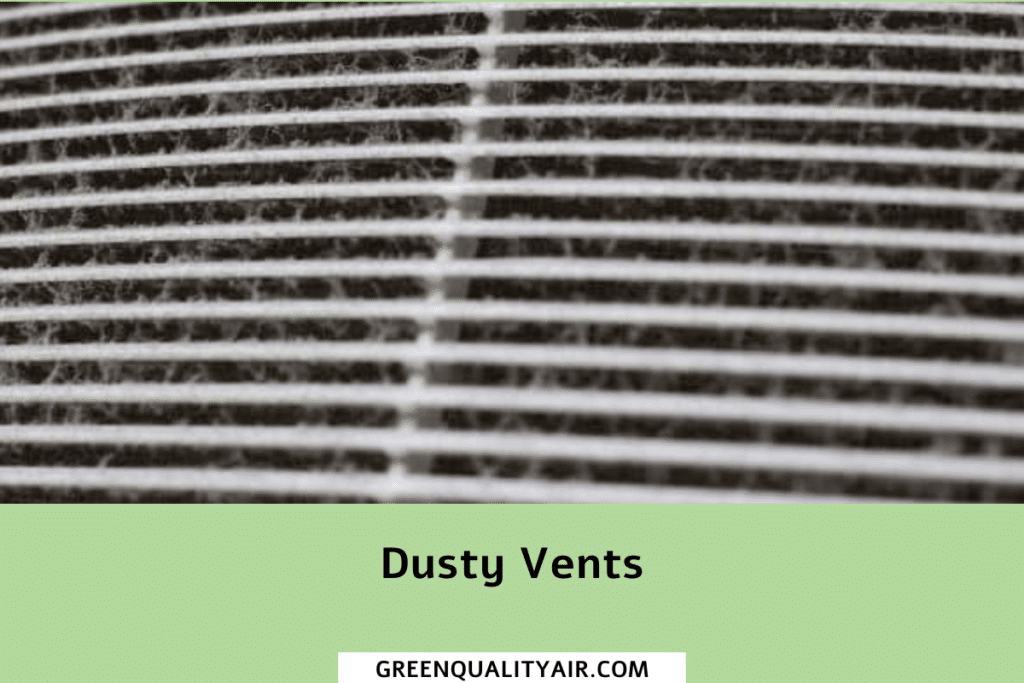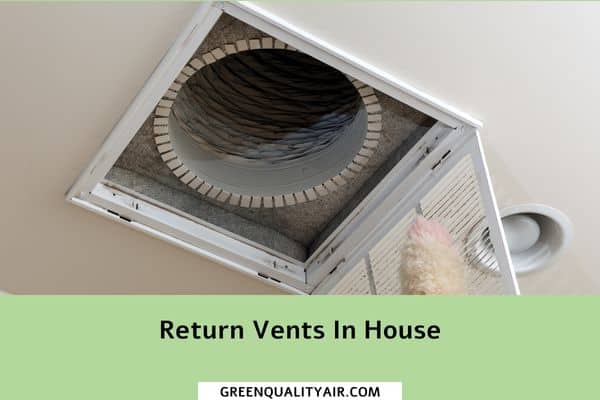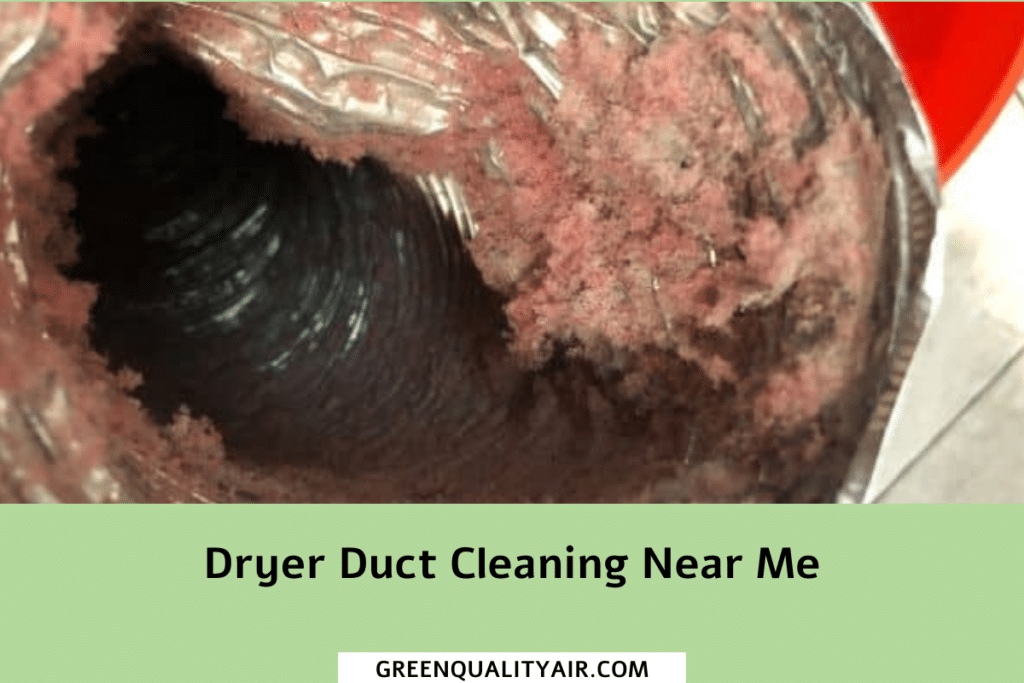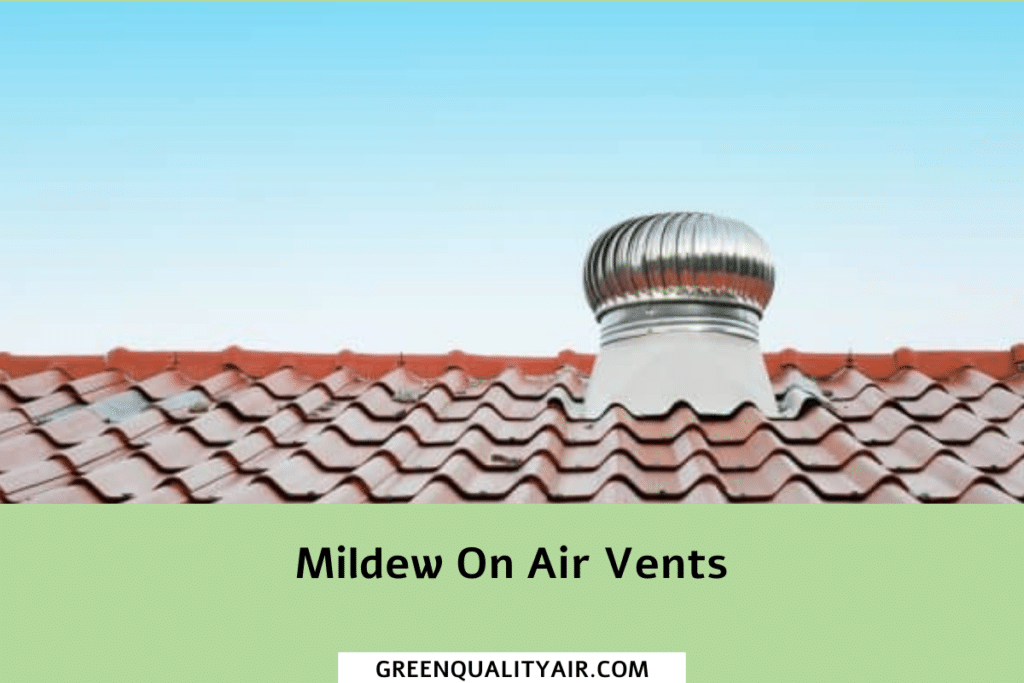Are you looking for an easy and affordable way to maintain the air quality in your home without spending a lot of time or money? Then it’s time to start thinking about dusting off those dusty vents and giving them some TLC!
By routinely cleaning these components, you can drastically improve the air quality in your home while also cutting down on allergens such as pollen, bacteria, and pet dander.
But before you start tackling this job yourself, there are a few things that you should know first — from safety tips to simple DIY vent care strategies — so read on to learn more about properly caring for your home’s dusty vents!
Identifying Problem Areas Where Dust Can Accumulate
When it comes to keeping a space clean and healthy, identifying problem areas where dust can accumulate is crucial. One such spot that often goes overlooked is dusty vents. These can be found in homes, offices, and pretty much any indoor environment that relies on heating and cooling systems.
Over time, dust can build up in the vents and circulate throughout the space, potentially causing health issues for those who inhabit it. By taking the time to identify and address this problem area, you can ensure that your indoor air quality remains top-notch and that you and those around you stay healthy and happy.
Contact Us
Understanding the Benefits of Cleaning Out Your Dusty Vents
Have you ever noticed that your home seems dusty no matter how often you clean? The culprit could be your dusty vents. Over time, they collect dust and debris that can decrease the efficiency of your HVAC system. In addition to improving air quality and reducing dust, cleaning out your vents can save you money on energy bills by allowing your system to work more efficiently.
It’s a simple yet effective way to maintain your home and ensure the health of your family. Don’t let dusty vents go unchecked – take the steps necessary to keep your home running smoothly and cleanly.
Creating an Effective Clean-Out Plan - Dusty Vents
When it comes to cleaning out your space, having a plan in place can help you stay organized and efficient. One area that often gets neglected is the air vents, which can become clogged with dust and debris over time.
To create an effective clean-out plan, start by identifying the areas you want to focus on and prioritize them based on their level of importance. For instance, if you suffer from allergies or have respiratory issues, clearing out dusty vents may be a top priority.
By including this task in your clean-out plan, you’ll be able to breathe easier and enjoy a healthier living environment.
More Articles
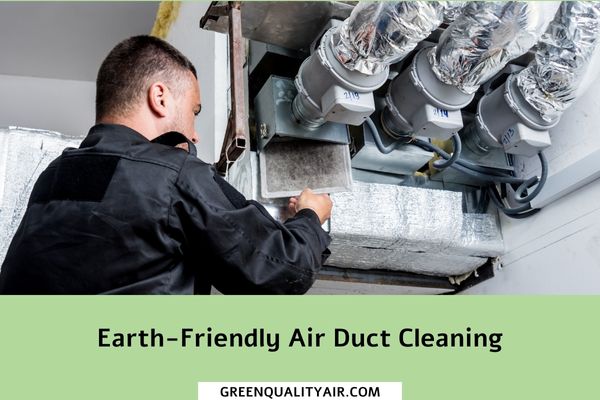
Earth-Friendly Air Duct Cleaning: Sustainable Solutions for Clean, Healthy Air
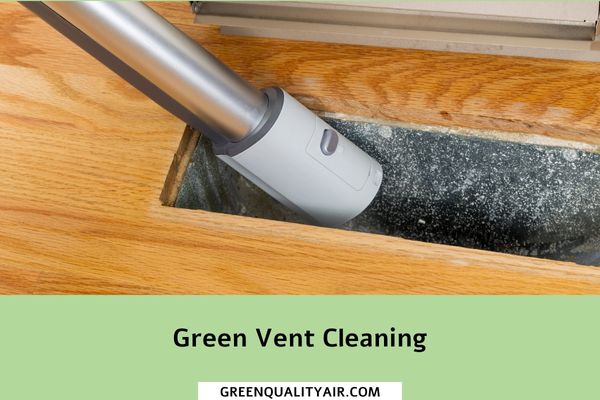
Green Vent Cleaning – A Comprehensive Guide to Sustainable and Effective Ventilation Maintenance
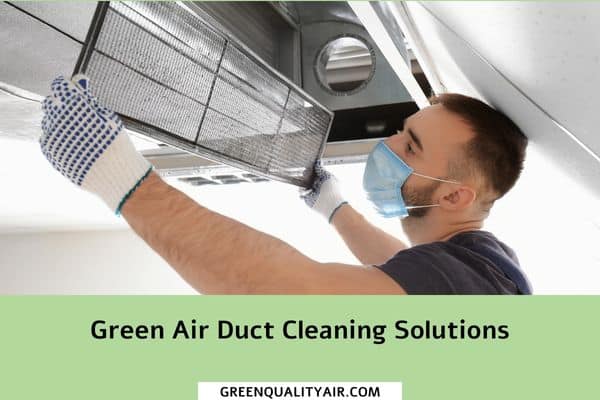
Breathe Easy with Green Air Duct Cleaning Solutions

Earth-Friendly Air Duct Cleaning: Sustainable Solutions for Clean, Healthy Air
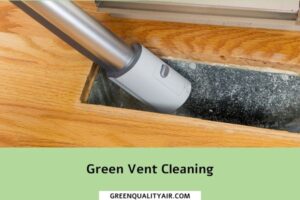
Green Vent Cleaning – A Comprehensive Guide to Sustainable and Effective Ventilation Maintenance
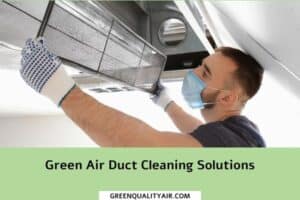
Breathe Easy with Green Air Duct Cleaning Solutions
Utilizing Vacuum Attachments to Maximize Efficiency and Safety
When it comes to cleaning, maximizing efficiency and safety should always be top priorities. This is especially true for those who deal with dusty vents on a regular basis. Fortunately, utilizing vacuum attachments can help achieve both goals.
These attachments are specifically designed to work with vacuums and can easily reach those pesky, hard-to-reach areas. By using these attachments, cleaning dusty vents becomes a breeze.
Not only does using vacuum attachments make cleaning easier, it also ensures a safer environment, as dust and debris are quickly removed from the area. With all the benefits of vacuum attachments, it’s clear that utilizing them can help take both efficiency and safety to the next level.
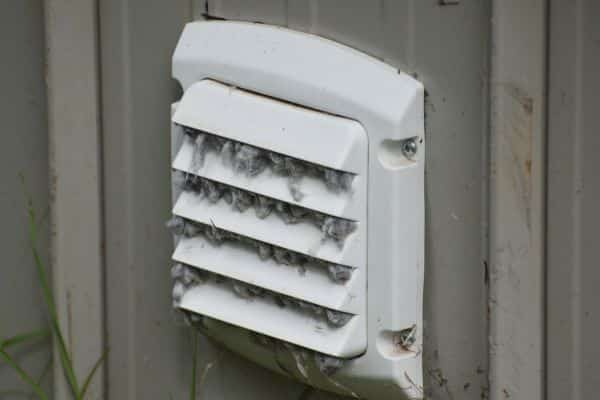
Disposing of the Dust and Debris Safely
If you’ve ever noticed dirty air vents in your home, it’s important to address them before they become a health hazard for you and your loved ones. Disposing of the dusty debris safely is crucial to prevent respiratory problems and other health issues.
A common mistake many people make is using a vacuum cleaner to clean out dusty vents, but this can actually spread the dust and allergens throughout the air and cause more harm. Instead, try wiping down the dusty vents with a damp cloth and dispose of the dust in a sealed bag.
This way, you can ensure that you’re not breathing in any harmful particles while also keeping your home clean and healthy.
Tips for Maintaining Clean Vents Going Forward
Are you tired of constantly dealing with dusty vents? Keeping vents clean is essential for good indoor air quality, optimal HVAC system performance, and energy efficiency. To maintain clean vents going forward, start with scheduling regular cleaning appointments with a professional.
Additionally, it’s important to replace your air filters regularly to prevent dust and debris buildup. You can also use a vacuum attachment to gently remove any loose dust on your vents, being careful not to damage the grates or ductwork. Incorporating these tips into your routine will help ensure clean and not dusty vents and a healthier living environment.
All in all, it’s important to regularly clean out your air vents to ensure that your air systems are working at peak efficiency and safely. With a little bit of time and effort, you can make sure that dust and debris don’t become stuck within the ductwork and accumulate over time. Consider using vacuum attachments in order to maximize efficiency and safety.
After all, the best way to maintain clean air vents is regular maintenance so don’t forget to add this task into your normal cleaning routine! Does this post have you ready for an air cleaning? Head over to our store now for all of your vent vacuuming needs!
Dusty Vents FAQ
How do I know if a vent is too dirty to be cleaned?
Before you attempt to clean a vent, it is important to first understand the signs of when it is too dirty and should be replaced. The primary sign that your vents are beyond simple cleaning is dirt and debris buildup.
If you notice the accumulation of dust, dirt, mold or mildew inside your dusty vents or ducts then they should be replaced immediately as this could indicate more serious issues related to air quality. Additionally, if the vent in question has been exposed to water damage from flooding or leakage then chances are that it will need replacing as well.
It is also important to note that certain types of materials used in making vents can become damaged over time due to regular wear and tear or contact with chemicals such as bleach which can weaken them significantly.
If this is the case then it would be wise to replace any component parts rather than attempting any form of repair work on them yourself as this could compromise their structural integrity even further.
Finally, if you detect an unpleasant smell coming through your ventilation system then again this could mean that there may be a build up of bacteria and other organisms which need attention from a professional team who have access to specialist cleaning solutions not available for sale at home improvement stores.
It is always best practice not take risks when dealing with potential lighting health issues related to airborne particulates so please do contact a qualified expert before making any decisions about what action needs taking next!
What should I do if dust is coming out of my vents?
If you are noticing dust coming out of your dusty vents, it’s important to diagnose the source of this issue as soon as possible. Dust can be an indication of a variety of problems with the air circulation system in your home, including clogged or dirty filters, cracks in ventilation ducts where unfiltered air can enter, and even weak fans and motors that are not providing enough airflow.
The first step is to check the filter in your vents – if it is dirty or clogged then replace/clean it immediately. This will help reduce the amount of dust being circulated within your home. If this doesn’t resolve the issue on its own then further steps may need to be taken depending on what type of HVAC system you have installed in your house.
If you have forced-air heating and cooling (e.g., central AC), there might be dirt buildup inside the ductwork necessitating professional cleaning services from a certified technician to properly remove all debris from affected areas.
The buildup could also be due to a faulty automatic dampener incorrectly controlling how much conditioned air enters each room and leading to excess dust accumulation elsewhere throughout your home’s ventilation system over time.
It might also indicate poor insulation between walls allowing more outdoor particles move inside than usual, collecting within vent openings during operation cycles (especially true for older homes).
On top of these possibilities consider having an annual inspection done on all available components that affect indoor air quality like humidification systems and dehumidifiers since moisture maintenance plays a big role regarding airborne contaminant control – too little or too much humidity can create interior environments ripe for mold infestations which ultimately leads back to more dust affecting everyone’s living area situation plaza!
Additionally, always keep an eye open towards additional warning signs indicative of serious airflow trouble like: colder/warmer temperatures on certain floors; contents shifting around while machines are running; constantly running appliances; shut off registers despite active furnace verifications etc..
All these points should normally help give insights into whether any specific component needs examination/replacement before inevitable energy & financial losses become one too many!
Is there anything I can do to prevent my vents from becoming dusty?
Dust accumulation in a home’s vents is a common problem, especially in homes with pets or heavy traffic inside the house. Fortunately, there are a few simple steps homeowners can take to help prevent dust from collecting inside their air ducts and vents.
Firstly, keep windows and doors closed as frequently as possible so that dust doesn’t enter the home from outside sources. Secondly, regularly vacuum floors and furniture to remove surface dirt and debris that could eventually end up floating through your air vent system.
Finally, remember to regularly change your HVAC filters according to the manufacturer’s instructions since dirty filters can restrict airflow within the home and consequently increase levels of indoor pollutants like dust particles.
In addition to these simple tips for preventing dusty vents, consider investing in an air purifier with a HEPA filter; its powerful filtering abilities will capture small particles such as pet dander, mold spores, allergen proteins, bacteria-carrying organisms—and yes—even tiny specks of dust!
High quality air purifiers should be frequently cleaned or replaced when necessary for maximum effectiveness against pollutants such as dust particles. Moreover you may want to look into having professional cleaning services come periodically for deep cleanings; while pricey upfront these services help maintain high levels of indoor air quality throughout your entire home over time without having you lift a finger (or vacuum!).
How do I know if my vents are working properly?
Well, the answer to this question largely depends on what type of vents you have. Most vents come with an indicator that tells you if they are working properly or need servicing. But in some cases, there may not be any indicators present and can require some extra effort to identify whether or not your vents are functioning efficiently.
If you have forced-air ducts then it’s fairly easy to check if everything is in order. Start by feeling the air coming out of each vent to make sure it is blowing at equal strength throughout the house.
If one section blows much harder than another, then that could indicate a problem with your venting system and should be serviced as soon as possible. You can also check for temperature discrepancies between certain areas of your home; if one room feels warmer than another, then chances are something isn’t working properly with your ventilation system.
Additionally, take note of any odors lingering throughout the house as well – musty smells can mean mold or mildew growing inside furnaces and air ducts which should be professionally investigated immediately before causing potential health issues down the line for residents living inside that dwelling space.
Another way to know if there is something wrong with your ventilation system is through regular maintenance checks done by professionals who specialize in heating and cooling systems like HVAC technicians.
They will come out and inspect all parts related to heating and cooling such as blowers, motors, belts etc., ensuring that everything has been connected correctly while identifying signs of wear or damage before they become costly repairs had these problems been left unchecked for longer periods of time.
All these steps should be taken seriously especially during extreme temperatures when improvements such as proper insulation around windowsills can help maintain a consistent temperature throughout all beds within a particular structure which makes regular maintenance checks even more important so having a professional inspection done annually would do wonders towards keeping everyone inside safe from potential risks caused by inefficiently running HVAC systems thus helping ensure good quality health being sustained indoors all year long!
What kinds of health problems can be caused by dusty vents?
Dusty vents can cause a variety of health problems, ranging from minor breathing difficulties to serious illnesses. The dust particles can contain allergens, which may trigger allergies or asthma attacks in those who are sensitive to them. Furthermore, if the dust contains mold spores or other dangerous particles like asbestos fibers, it could lead to more serious respiratory problems.
In addition to affecting the lungs and airways directly, exposure to dust and debris from vents may also cause irritation of the eyes and skin, fatigue due to inadequate quality air circulation throughout your house or office space as well as headaches caused by chemical irritants in combination with poor air quality. In some cases, prolonged exposure can even lead to diseases such as bronchitis and pneumonitis (inflammation of the lungs).
To reduce these health risks associated with dusty vents, you should have them regularly cleaned by an experienced professional who is familiar with proper ventilation cleaning techniques.
A good rule of thumb is that generally speaking vents should be professionally cleaned at least once a year depending on how often they are used or how dirty they become over time. Regular maintenance like this along with decreasing indoor pollutants will go a long way towards maintaining healthy indoor air quality!
How long does it take to clean dusty vents?
Cleaning your dusty vents can be a time-consuming task, but one that’s important in order to ensure optimal air quality and energy efficiency within your home or office.
The exact amount of time it takes to clean the vents will depend largely on the size and complexity of the system, as well as how much dirt and dust accumulation there is. Generally speaking, most systems require between 30 minutes and two hours for a thorough cleaning.
To begin you’ll want to gather all the appropriate supplies: a vacuum with an attachment designed for duct cleaning; portable fans; rags; mild detergent mixed with water in a spray bottle to dissolve grease buildups; stiff brushes or wipes for scrubbing caked-on dirt similarly unsightly grime. Shut off power supply lines running into each vent prior to starting any work–it’s best (and safest) not have them switched on while inside the vent!
Next, try reaching into each vent with your hand (wearing protective gloves) or use a thin stick like an old kitchen spoon handle bent at 90 degrees at one end – do this carefully so as not to damaga anything! Work around corners by lifting up metal sheets slightly in order to access hidden areas of dust buildup.
Once you’ve removed as much visible debris as possible using these tools then it’s time for vacuuming out whatever remains–be sure attach all attachments securely on youvacuum before proceeding!
Any stubborn spots can be addressed with gentle detergent/soap mixture applied via rag/cloth wipe down method until sufficient loosening has occurred before giving final rinse job using only warm water mop afterwards aclean finish everything off nicely 😉
Overall if done properly both efficiently & effectively overall duration could range anywhere from half hr~2hrs depending upon severity levelschaotic stateof grime+dust buildups already present when first starting out
What should I do if my vents are difficult to reach?
If your vents are difficult to reach, there are a few tips and tricks you can use to make the job easier. First, if you don’t want to move or climb furniture in order to get access to the vent, an extendable duster or brush might be the best solution for you.
You can usually find one at any hardware store or from online retailers like Amazon. It’s important that whatever tool you use is compatible with your specific air ducts (metal vs plastic).
Second, it’s always a good idea to invest in a vacuum cleaner specifically designed for cleaning air vents. These vacuums come with special curved tubes and attachments so they can easily fit into tight areas, reaching every corner of your ducts without having to contort yourself into hard-to-reach positions.
This will ensure all dust particles and debris are removed before mold starts growing inside your air ducts — which could lead to unnecessary health risks for everyone living in the house!
Finally, make sure that you wear protective gear anytime you reach up high into difficult places such as attic vents or crawl spaces; this includes things like gloves and goggles which will protect both yourself from injury as well as keep contaminants out of your nose and mouth while cleaning.
With these practical steps taken care of beforehand, it should be much easier for you tackle those pesky ventilation spots!
What should I look for when hiring someone to clean my vents?
When hiring a professional to clean your dusty vents, there are a few key factors you should look into. First and foremost, it is essential that the service provider carries appropriate insurance and licensing.
Checking credentials will ensure that their work is done properly and safely. Secondly, make sure to research about the professionals’ experience with air duct cleaning and ask for references from past customers. Looking at customer reviews can give you an idea of what others have experienced when entrusting them with their home’s air system maintenance needs.
Another important factor to consider when hiring someone to clean your dusty vents is the type of equipment they use – do they use brushes or compressed air? Brushes can be effective in trapping dust particles, but if used incorrectly they can also introduce more dirt into the vent or even cause mechanical damage.
Using compressed air is generally considered safer as it does not damage vents while still efficiently removing debris buildup inside the ductwork.
Additionally inquire whether HEPA filtration systems are being used for maximum airborne particle removal efficiency during each cleaning job; such systems always offer superior results compared to traditional techniques which allow tiny particles of dust back in after every cleaning session.
Finally, be sure to inquire about pricing options before signing up with any contractor – some may offer discounts based on frequency of visits or amount of debris removed per session; these could help lower overall costs considerably over time depending on your specific needs. Don’t forget – asking questions upfront ensures better results in the long run!
